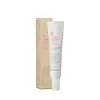What's inside
What's inside
 Key Ingredients
Key Ingredients

 Benefits
Benefits

 Concerns
Concerns

 Ingredients Side-by-side
Ingredients Side-by-side

Centella Asiatica Extract
CleansingWater
Skin ConditioningCalamine
AbsorbentCaprylic/Capric Triglyceride
MaskingCoco-Caprylate/Caprate
EmollientPentylene Glycol
Skin ConditioningSimmondsia Chinensis Seed Oil
EmollientGlycerin
HumectantCetearyl Olivate
Glyceryl Stearate
EmollientCetyl Alcohol
EmollientSorbitan Olivate
EmulsifyingDipotassium Glycyrrhizate
HumectantPropanediol
SolventHouttuynia Cordata Extract
Skin ConditioningEnantia Chlorantha Bark Extract
Skin ConditioningAsiatic Acid
Skin ConditioningMadecassic Acid
Skin ConditioningAsiaticoside
AntioxidantMadecassoside
AntioxidantOleanolic Acid
Skin ConditioningGlyceryl Caprylate
EmollientLauryl Alcohol
EmollientCetearyl Alcohol
EmollientStearyl Alcohol
EmollientMyristyl Alcohol
EmollientXanthan Gum
EmulsifyingAmmonium Acryloyldimethyltaurate/Vp Copolymer
Butylene Glycol
HumectantMelaleuca Alternifolia Leaf Oil
AntioxidantMentha Arvensis Leaf Oil
MaskingHydrogenated Phosphatidylcholine
EmulsifyingSodium Gluconate
Skin Conditioning1,2-Hexanediol
Skin ConditioningSucrose Stearate
EmollientCentella Asiatica Extract, Water, Calamine, Caprylic/Capric Triglyceride, Coco-Caprylate/Caprate, Pentylene Glycol, Simmondsia Chinensis Seed Oil, Glycerin, Cetearyl Olivate, Glyceryl Stearate, Cetyl Alcohol, Sorbitan Olivate, Dipotassium Glycyrrhizate, Propanediol, Houttuynia Cordata Extract, Enantia Chlorantha Bark Extract, Asiatic Acid, Madecassic Acid, Asiaticoside, Madecassoside, Oleanolic Acid, Glyceryl Caprylate, Lauryl Alcohol, Cetearyl Alcohol, Stearyl Alcohol, Myristyl Alcohol, Xanthan Gum, Ammonium Acryloyldimethyltaurate/Vp Copolymer, Butylene Glycol, Melaleuca Alternifolia Leaf Oil, Mentha Arvensis Leaf Oil, Hydrogenated Phosphatidylcholine, Sodium Gluconate, 1,2-Hexanediol, Sucrose Stearate
Water
Skin ConditioningCaprylic/Capric Triglyceride
MaskingGlyceryl Stearate Se
EmulsifyingStearic Acid
CleansingCetearyl Alcohol
EmollientColloidal Sulfur
AntimicrobialGlycerin
HumectantSuccinic Acid
BufferingHydroxyethyl Acrylate/Sodium Acryloyldimethyl Taurate Copolymer
Emulsion StabilisingSalicylic Acid
MaskingPhenoxyethanol
PreservativeSqualane
EmollientBenzyl Alcohol
PerfumingSodium Hyaluronate
HumectantPolysorbate 60
EmulsifyingEthylhexylglycerin
Skin ConditioningSodium Hydroxide
BufferingDehydroacetic Acid
PreservativeMalachite Extract
AntioxidantSorbitan Isostearate
EmulsifyingTrisodium Ethylenediamine Disuccinate
CI 75810
Cosmetic ColorantWater, Caprylic/Capric Triglyceride, Glyceryl Stearate Se, Stearic Acid, Cetearyl Alcohol, Colloidal Sulfur, Glycerin, Succinic Acid, Hydroxyethyl Acrylate/Sodium Acryloyldimethyl Taurate Copolymer, Salicylic Acid, Phenoxyethanol, Squalane, Benzyl Alcohol, Sodium Hyaluronate, Polysorbate 60, Ethylhexylglycerin, Sodium Hydroxide, Dehydroacetic Acid, Malachite Extract, Sorbitan Isostearate, Trisodium Ethylenediamine Disuccinate, CI 75810
 Reviews
Reviews

Ingredients Explained
These ingredients are found in both products.
Ingredients higher up in an ingredient list are typically present in a larger amount.
This ingredient is an emollient, solvent, and texture enhancer. It is considered a skin-softener by helping the skin prevent moisture loss.
It helps thicken a product's formula and makes it easier to spread by dissolving clumping compounds.
Caprylic Triglyceride is made by combining glycerin with coconut oil, forming a clear liquid.
While there is an assumption Caprylic Triglyceride can clog pores due to it being derived from coconut oil, there is no research supporting this.
Learn more about Caprylic/Capric TriglycerideCetearyl alcohol is a mixture of two fatty alcohols: cetyl alcohol and stearyl alcohol. It is mainly used as an emulsifier. Emulsifiers help prevent the separation of oils and products. Due to its composition, it can also be used to thicken a product or help create foam.
Cetearyl alcohol is an emollient. Emollients help soothe and hydrate the skin by trapping moisture.
Studies show Cetearyl alcohol is non-toxic and non-irritating. The FDA allows products labeled "alcohol-free" to have fatty alcohols.
This ingredient is usually derived from plant oils such as palm, vegetable, or coconut oils. There is debate on whether this ingredient will cause acne.
Due to the fatty acid base, this ingredient may not be Malassezia folliculitis safe.
Learn more about Cetearyl AlcoholGlycerin is already naturally found in your skin. It helps moisturize and protect your skin.
A study from 2016 found glycerin to be more effective as a humectant than AHAs and hyaluronic acid.
As a humectant, it helps the skin stay hydrated by pulling moisture to your skin. The low molecular weight of glycerin allows it to pull moisture into the deeper layers of your skin.
Hydrated skin improves your skin barrier; Your skin barrier helps protect against irritants and bacteria.
Glycerin has also been found to have antimicrobial and antiviral properties. Due to these properties, glycerin is often used in wound and burn treatments.
In cosmetics, glycerin is usually derived from plants such as soybean or palm. However, it can also be sourced from animals, such as tallow or animal fat.
This ingredient is organic, colorless, odorless, and non-toxic.
Glycerin is the name for this ingredient in American English. British English uses Glycerol/Glycerine.
Learn more about GlycerinWater. It's the most common cosmetic ingredient of all. You'll usually see it at the top of ingredient lists, meaning that it makes up the largest part of the product.
So why is it so popular? Water most often acts as a solvent - this means that it helps dissolve other ingredients into the formulation.
You'll also recognize water as that liquid we all need to stay alive. If you see this, drink a glass of water. Stay hydrated!
Learn more about Water